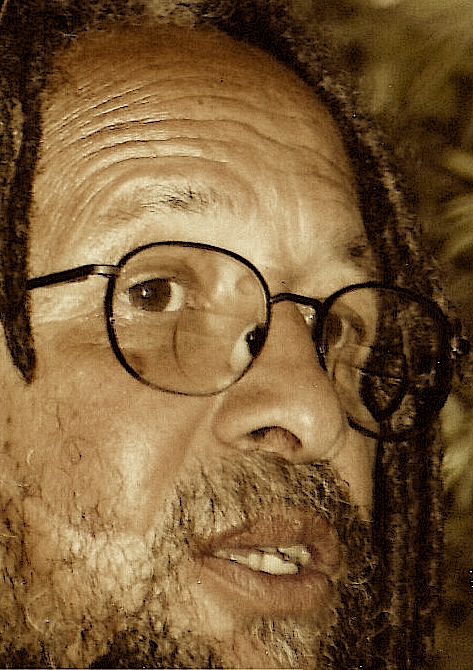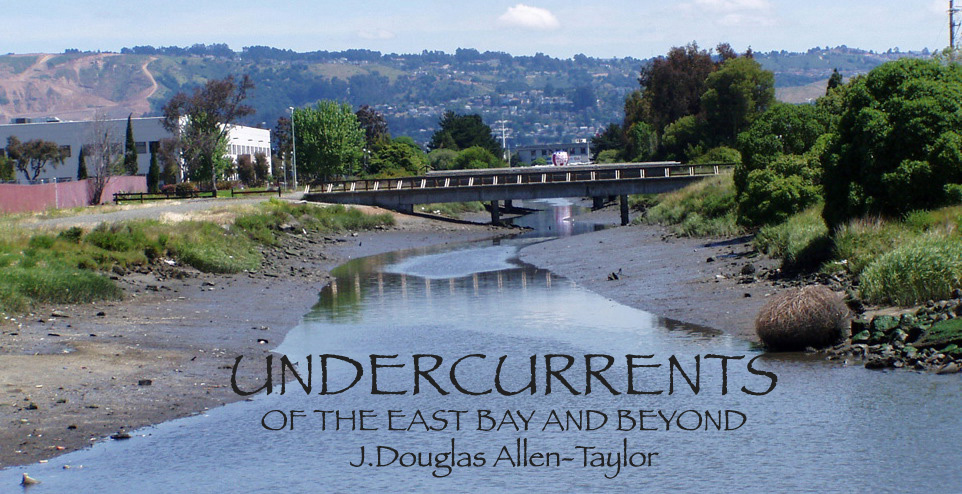
Columns written for the Berkeley Daily Planet newspaper, Berkeley, CA
Berkeley Daily Planet

Columns written for the Berkeley Daily Planet newspaper, Berkeley, CA |
|
|
TWO TRAINS RUNNING
…or, perhaps more accurately, from the old Muddy Waters blues standards: “Two trains running, ain’t not one going my way.” Earlier this month, the Berkeley City Council received its quarterly crime report, during which the Council discussed both the drug trade and the related cross-border disputes between South and West Berkeley and North Oakland neighborhood gangs that have contributed so much to the area’s violence. Everyone on Council sincerely wanted to slow down or stop the city’s violence. None of them had a clear idea how. There was the usual collection of suggestions about more guns off the streets and more lights on the streets, each one of them important in its own right, but nothing adding up to an overall plan. We’ve been down this road many times before. Oakland City Council has had similar discussions over the years, the rhetoric rising or falling depending upon some sudden spike in the violent crime rate, or a rash of restaurant takeover robberies or street burglaries in one of the “safe” sections of Oakland, or following the commission of some particularly heinous event. As with Berkeley, Oakland City Councilmembers sincerely want an end to the violence. But no comprehensive plan—beginning with a detailed discussion of the causes of the violence and ending with a program for cures—ever seems to see the light of day. To my knowledge, in fact, Oakland City Council’s Public Safety Committee has never even held a public hearing for the sole purpose of addressing the causes of Oakland’s street violence. Public Safety Committee Chair Larry Reid is fond of calling each new murder in the city “insanity,” but Oakland City Council’s actions in this regard seem to mimic Albert Einstein’s definition of the word, doing the same thing over and over again while expecting a different result. Meanwhile, the city’s Measure Y Oversight Committee regularly discusses the issue, but almost always to a miniscule public audience, and with more of an eye to monitoring the funding the cures than exploring the causes. And while the Dellums mayoral task force report on public safety has good suggestions for strategies ranging from community policing to reintegration of incarcerated individuals and youth and domestic violence, the report starts and ends with recommendations, skipping any discussion of causes. How can we know how to correct a problem if we do not know the cause? Two facts are relevant to this discussion. First, despite the fact that it is almost always adults in their 30’s and upward who conduct the discussions of East Bay violence at meetings of our public governing bodies, it is the youth (and, more specifically, African-American youth) who are the primary victims of that violence. The 2007 “Homicides In Oakland” report authored by the Urban Strategies Council concluded that 31.5 percent of the homicide victims in Oakland were between the ages of 18 and 24, matching the largest single bloc of victims. And if the add the 7.1 percent of the victims who were between 12 and 17 that year, the total percentage of youth homicide victims in the city were 38.6 percent. A year before, 12-24 year old victims comprised just under 50 percent of Oakland homicides, and the five year average puts youth victims at 44.6 percent. Meanwhile, African-Americans comprised 71.7 percent of the homicide victims in Oakland in 2007, Hispanics (Latinos) another 20.5 percent, bringing the African-American/Latino total to 92.2 percent of the total Oakland homicide victims for that year. One can assume that the statistics of most other violent crimes in the city mirror this trend. The racial breakdown is no aberration. The Urban Strategies Council study put the five year homicide victim average at 90.7 percent African-American/Latino, and an earlier study by the Alameda County Public Health Department (Violence In Oakland 2002-04) put African-American homicide victims in the city during those three years at 77.1 percent, and Hispanics (Latinos) at 13.7 percent, making the total number of homicide victims 90.8 percent. The Alameda County study also put 33.9 percent of the Oakland homicide victims in that period between the ages of 15 and 24. To recap, the most likely victim of a homicide in Oakland is a young person of color. The second fact to be kept in mind in this discussion is that it is a probably a very small percentage of the youth community who are actually committing the violence. Talking about the perpetrators of South and West Berkeley’s violence during this month’s City Council discussion, for example, Chief Douglas Hambelton said that “it’s not a huge number of people. Thankfully, it’s only a small number of people who are very, very violent.” Assuming that Mr. Hambelton’s statement is true for the entire region, and given the fact, then, that a plurality of the victims of violence are between the ages of 15 and 24 and the overwhelming majority are either African-American or Latino, one would think that the cities of this region would wrap our arms of protection around our youth of color to shield them from this violent onslaught from a small number of perpetrators. Sometimes we do, sporadically. But just as often—perhaps more often—we block out the young people of color and bar them from our public and recreational activities—sometimes unconsciously, sometimes deliberately—probably on the theory that keeping all of the dark kids away is the best way to protect the rest of us from that violence. One of “us” might catch a stray bullet meant for one of “them,” after all. And so, for example, the City of Oakland this year canceled most of its longstanding and most popular neighborhood street festivals, on the theory that some of these festivals required a large police presence to protect the festival-goers from violence, and Oakland could no longer afford to pay the police department to provide that protection. One of these festivals was the Cinco De Mayo event in the Fruitvale, which regularly attracted large crowds of Latino and African-American youth. The overwhelming and vast, vast majority of these young folks were coming out to Cinco for the same reason as the rest of us, to have a peaceful good time. By their actions, OPD and city officials declared that such large gatherings of peaceful youth of color could not be—or would not be—protected. But wait. While Cinco De Mayo was being scuttled for lack of funds to protect people from violence, Oakland somehow found enough money to create a brand-new street festival this month, Uptown Unveiled, in which the Tribune informed us that “hundreds of revelers Thursday filled the Telegraph Avenue corridor from 16th street to West Grand Avenue along with musicians, skaters and artists.” (“Hundreds Celebrate Uptown Unveiled In Oakland” June 19, 2009) Uptown, one might remember, was created by former Oakland Mayor Jerry Brown as a brand-new central city neighborhood built for those people who had previously disdained from having anything to do with Oakland other than, perhaps, working here, or passing through on the freeway on their way from Danville to the San Francisco theater district. According to the Tribune article, “’Uptown's time has come,’ said developer Phil Tagami, the driving force behind the renovation of the newly restored and operating Fox Theater, which has anchored the area's revitalization. Tagami credited former Mayor Jerry Brown's efforts to spark the renaissance that he said Mayor Ron Dellums has been trying to take to the next level.” Although Mr. Tagami is engaging in a little hyperbole as to the level of Mr. Dellums’ intentions in order to promote a district of the city in which Mr. Tagami has such an enormous financial stake, the continuation of the concentration of Oakland’s uptown development—while failing to come up with a comprehensive policy and strategy for neighborhood commercial center development—is one of the more unfortunate areas where Mr. Dellums failed to break from the direction that Mr. Brown had set. African-American and Latino youth could certainly come over to uptown to enjoy last week’s festival, of course, but when they do so in “too large” or “too ethnic” or “too exuberant” numbers (all of the “too”’s being entirely subjective figures), they risk being looked on suspiciously as possible violence generators by police and event authorities, rather as welcome patrons. And many local venues pointedly leave out any entertainment that would specifically attract the African-American or Latino young adult crowd. Witness the entertainment lineup at this year’s Alameda County Fair. On Tuesday of this week, the Tribune reported, gushingly, that the entertainment stage lineup at this year's fair (currently ongoing) will have "something for everyone." "We really try to provide our fairgoers with a good musical mix of artists so that there is something to please everyone," the Tribune quoted fair spokeswoman April Mitchell as saying. ("Alameda County Fair's Got Something For Everyone" June 24, 2009) Well, not everyone, exactly. Here is a breakdown of the actual stage entertainment lineup, along with their field of speciality: Charlie Daniels (country), Mandisa (contemporary Christian), Night Ranger (rock), Bay Area Blues Society (blues), Carmen Jara (traditional Mexican), Skynnard Lynnard (tribute to the Southern rock band), Gregg Rolie (rock), Salvador (Christian), Bowling For Soup (Alternative), En Vogue (old school rhythm & blues), Bucky Covington (country), Evolution (tribute to Journey rock band), BJ Thomas (classic rock), Ozomatli (urban Latin), Solange Knowles (rhythm & blues), Con Funk Shun (old school r&b/funk), and Aaron Tippin (country). Of these, only Ozomatli—a Latino group—has a hip hop component, and there is no African-American hip hop representation at all. Hip hop music drives the entertainment industry and it is the music of East Bay youth, but it’s presence on the Alameda County Fair stage is almost nonexistent. And this year’s fair lineup is no aberration. Absence of hip hop entertainment is the norm, almost as if the committee putting on the fair wanted to make certain that crowds of dark-skinned youth did not overwhelm the turnstiles out in Pleasanton. But if we are discouraging our darkskinned youth from our public and sanctioned entertainment venues, how do we expect them to entertain themselves, and where? Or do we care? Meanwhile, our young people are talking about the East Bay’s violence, all the time, but on a distinctly different track from the official discussion. They constitute Longfellow’s other ship passing, the other train running. More on what they are saying, and how we might get the two discussions running together, in a later column. |